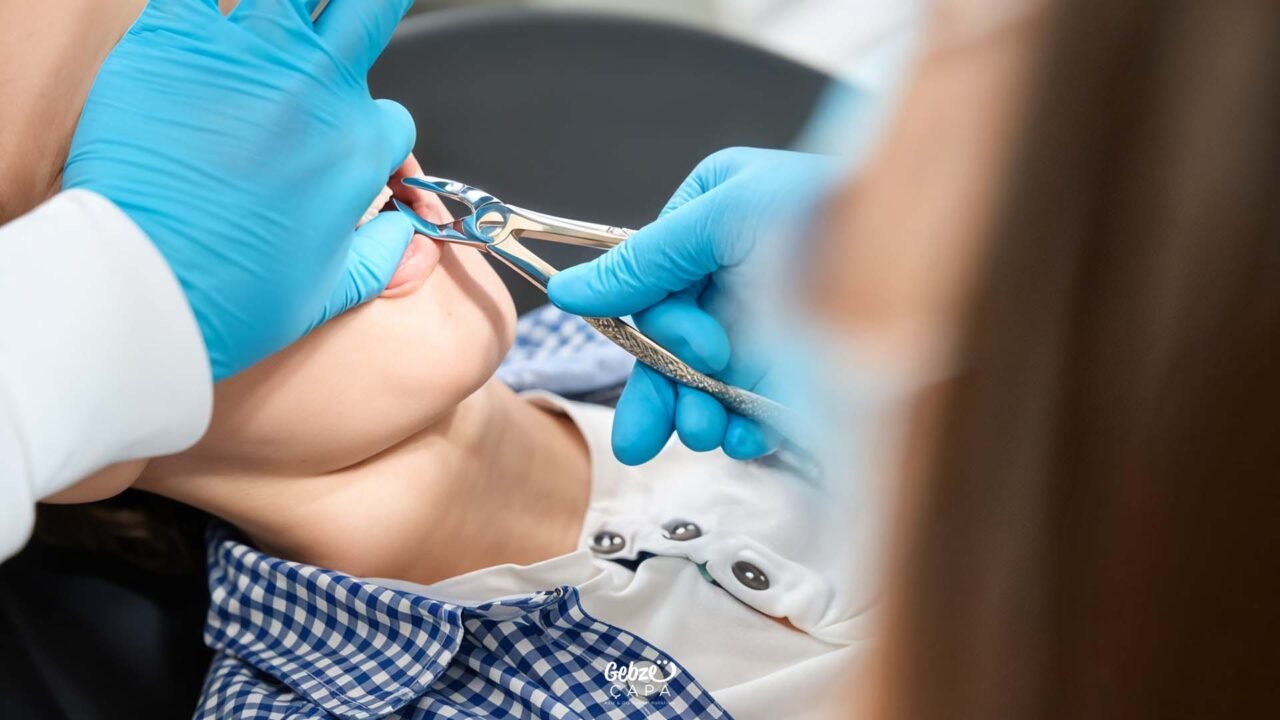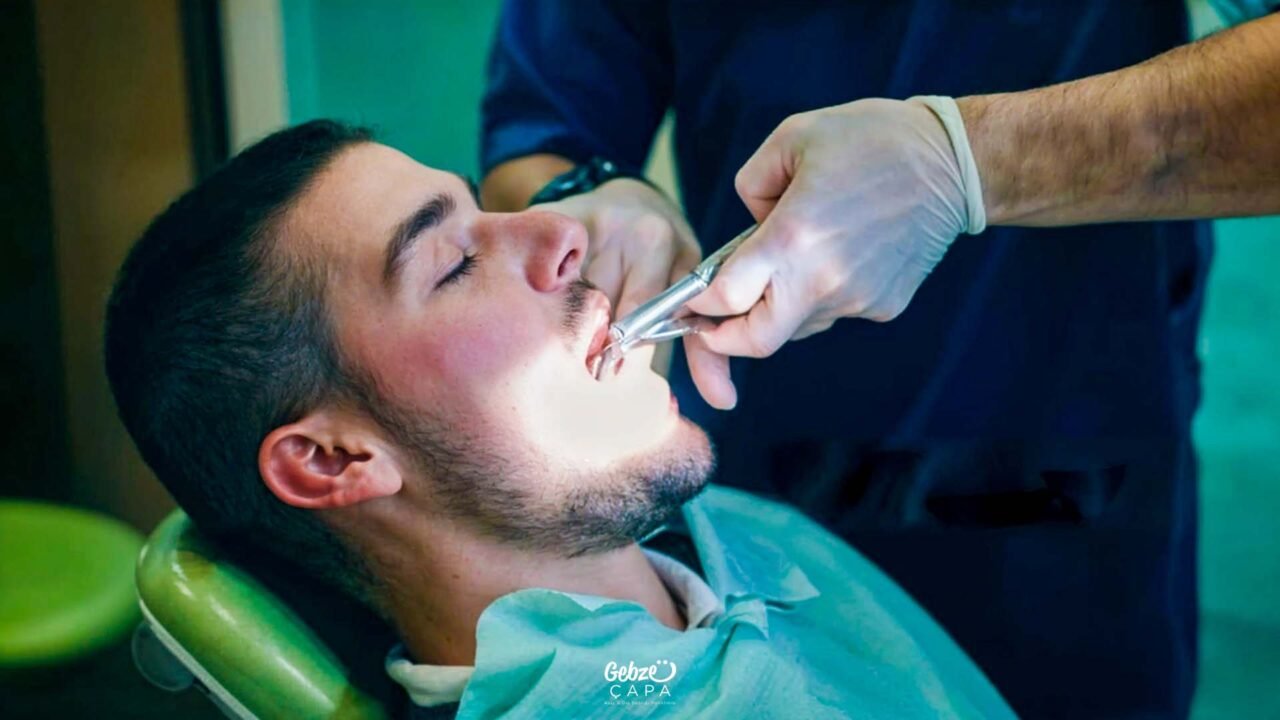Can an abscessed tooth be extracted?
Dental health has a significant impact on general health and there are many situations that cannot be ignored. Abscessed teeth are one of the most common problems; It is a condition that is both disturbing and can lead to serious health problems if left untreated. An abscessed tooth occurs when infection occurs in the root of the tooth or the surrounding tissues. This infection often causes inflammation of the gums, causing severe pain and discomfort.
Our dental health is directly linked to other parts of our body; Therefore, considering abscessed teeth as only a local problem may be misleading. Since abscessed teeth can cause the spread of bacterial infections and systemic health problems if left untreated, timely intervention is of great importance.
Why does abscess occur?
There are several basic reasons for the formation of an abscess, and these reasons are closely related to various factors affecting dental health. First of all, tooth decay plays an important role. A decayed tooth can cause weaknesses in its structure, causing bacteria to enter the inner parts of the tooth and cause infection. This process paves the way for the development of abscesses if left untreated.
Gum diseases are also a critical factor in the formation of abscesses. Gingivitis weakens the tissues around the tooth, increasing the risk of infection. Infected gums create a suitable environment for bacteria to spread, which can lead to the development of an abscess.
Additionally, factors such as dental trauma or excessive clenching may also trigger the formation of an abscess. Excessive pressure on the teeth causes cracks in the structure of the tooth, allowing bacteria to enter. Such physical trauma endangers the health of the tooth, increasing the risk of infection.

Symptoms of Abscessed Tooth
An abscessed tooth is a serious infection that is usually manifested by severe tooth pain. This pain often occurs as a throbbing pain and gets worse when eating or touching the tooth. Swelling occurs in the gums and sensitivity increases when this area is touched. Additionally, as the infection progresses, the body may respond with fever, creating a general feeling of malaise and fatigue. Another symptom of an abscessed tooth is difficulty swallowing; This condition may be exacerbated, especially depending on the size and location of the abscess.
A constant bad taste in the mouth and bad breath are also caused by the inflammation and bacteria spread by the abscess. These symptoms indicate that a dentist should be consulted before the infection spreads in the mouth and jaw area. It should be remembered that if left untreated, an abscessed tooth can lead to serious complications.
How to cure an abscess in a tooth?
In the treatment of an abscessed tooth, the first step is to control the infection. To stop the spread of the infection and prevent it from spreading to other parts of the body, the dentist usually prescribes antibiotic treatment. Antibiotics reduce inflammation caused by bacteria and help the immune system fight infection more effectively. However, antibiotic treatment only offers a short-term solution and does not completely eliminate the abscess. A more comprehensive intervention is required to get to the root of the infection and prevent the problem from recurring.
Depending on the degree of damage to the tooth where the abscess is located, the dentist may offer various treatment options. If there is a major infection at the root of the tooth or if the tooth is found to be severely decayed, tooth extraction may be necessary. Tooth extraction is the most effective way to eliminate the source of infection. This procedure is generally preferred in cases where the tooth is too damaged to be saved. After tooth extraction, the area affected by the abscess is cleaned and the healing process is accelerated.
In some cases, it may be possible to save the tooth with root canal treatment without having to extract the tooth. Root canal treatment involves cleaning the infected nerves and tissues inside the tooth and then filling and resealing the tooth. This method saves the tooth and reduces the risk of recurrence of the abscess. However, if the condition of the tooth is not suitable for this treatment, tooth extraction becomes mandatory.
Patients with dental abscess should pay particular attention to oral hygiene throughout the treatment process. Brushing teeth regularly, flossing, and maintaining oral care with antiseptic mouthwashes are important to prevent the spread of infection and speed up the healing process.

Should I Have an Abscessed Tooth Extracted?
Whether or not to have an abscessed tooth removed depends on the condition of the tooth and the severity of the infection. The dentist will evaluate how damaged the tooth is and the likelihood of saving it and recommend the most appropriate treatment method. If the tooth root has a very serious infection, the tooth may need to be extracted. Especially in cases of tooth decay or irreversible damage to the root area, tooth extraction is the most effective way to prevent the spread of infection.
However, tooth extraction is not necessary in all cases. If the condition of the tooth is suitable, alternative methods such as root canal treatment can be used to save the tooth. With this treatment, the infected tissue is cleaned and the tooth can be protected by filling it. Tooth extraction is generally preferred as a last resort and is a method used when there is no possibility of saving the tooth.


